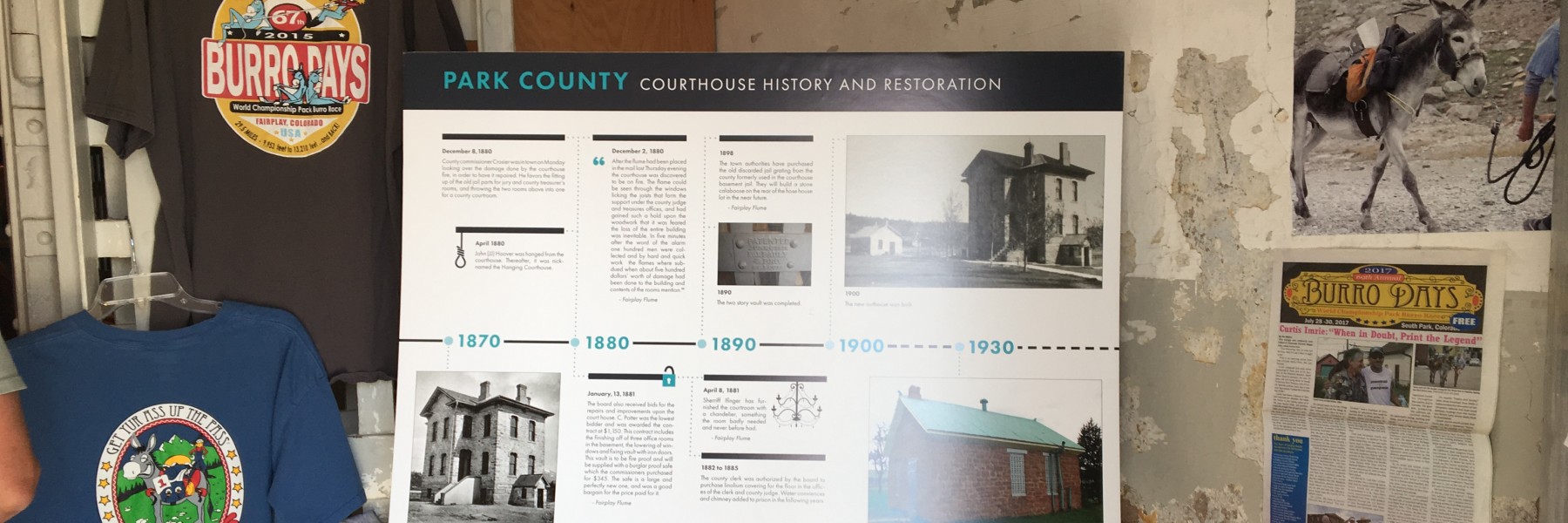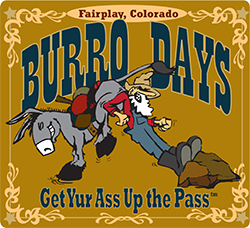
Evolution of Burro Racing
In 1949 when the challenge went out to anyone with the fortitude to race from Leadville to Fairplay for a $500 prize, every mountain town in the Rockies came alive in the following weeks trying to lure racers into representing them. Mosquito Pass became a mecca for aspiring racers. The local bars reported that those runners consuming more beer were producing faster practice times. The Fairplay Flume reported that there were more burros escaping from their pasture than ever remembered.
There were weekly reports of the status of Fairplay’s local racer Ed Knizely and the whereabouts of his burro, Prunes IV. A lot of local money was backing this team, so the town was on alert about the escape tactics of Prunes.
On race day 21 entrants showed up for the start. After a hectic start a racer from Como, Melville Sutton, took the lead and was the first to the top of the pass. The trip down the pass had local favorite Ed Knizely battling for the lead with Melville Sutton. In Park City, Sutton pulled ahead after the course finally took its toll on Knizely’s knees and feet.
In the end it was Melville Sutton and “Whitey” for first place and Ed Knizely and “Prunes IV” for second. Other finishers of the first race were: Clyde Hinman, Kokomo; Curley Simmons, Breckenridge; John Blamey, Leadville; Leo Lake, Twin Lakes; John Otten, Buena Vista; and Bernard Smith, Malta.
The excitement of this first race continued in the following years. Starr Yelland and KOA returned each year and the race soon received national coverage on the Dave Garroway show and on national sports shows. There were 40 racers to start the 1955 race. The lure of prize money attracted racers from all walks of life to challenge “The Pass.”
Some of the most exciting races were in the 1960s, when some marathoners decided to challenge the sport that was dominated by miners. At the time the race was dominated by nine-time winner Joe Glavinick of Leadville. He won his first race in 1955 and had some kind of special rapport with his burros that kept him in first place for over 20 years. His battles with marathoner Steve Matthews became legendary, showing that it takes more than being a good runner to win this race. Glavinick was the last of the true miners to win the race, but he beat the best runners of the time including some Olympic hopefuls who took the challenge.
In the 1970s the local mining industry declined rapidly with many of the miners having to relocate or take on new jobs – but the spirit of the race continued. During this time a cross country coach from Arvada, Lee Courkamp exposed burro racing to runners on the front range. Lee won the race two times and had a string of well trained burros. He inspired his high school teams to train with them and in the process won numerous state championships along with developing Olympic runner Jon Sinclair who also went on to win the 1977 race. Many of the present runners trained with Lee and have run his burros.
The current group of racers is probably the most diverse in history. Eight-time Ardel Boes, a math professor at the School of Mines in Golden was the first to break the 4 hour barrier which was felt to be impossible. Tom Sobal finally broke the seemingly “unbreakable” record of Joe Glavinick in 2002 with his 10th win. Tom also holds the course record of 3 hours 44 minutes for the 30 mile course. Hal Walters, a freelance writer, has won the race three times in the past six years.
As long as the “Pass” is there and a record to be broken, runners and burros will line up the last weekend of July to “Get Their Ass Up the Pass”.
